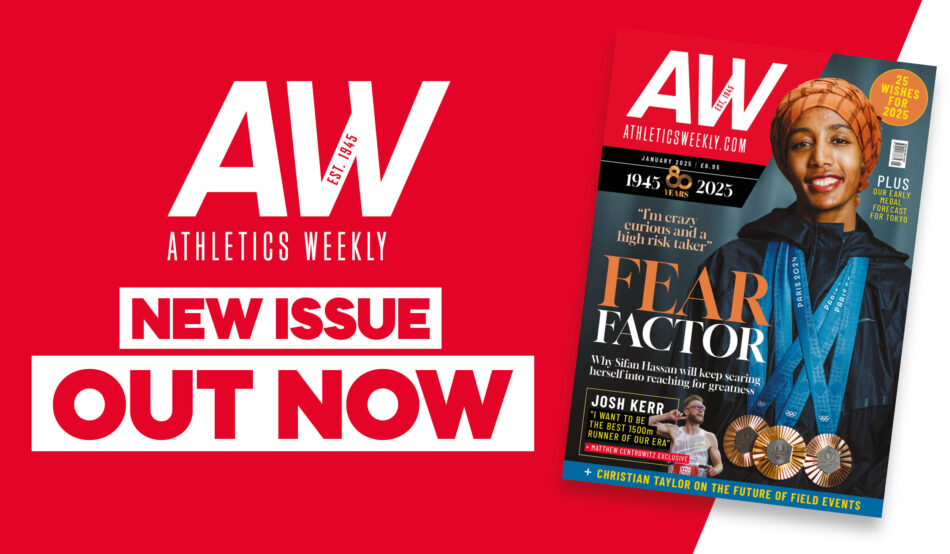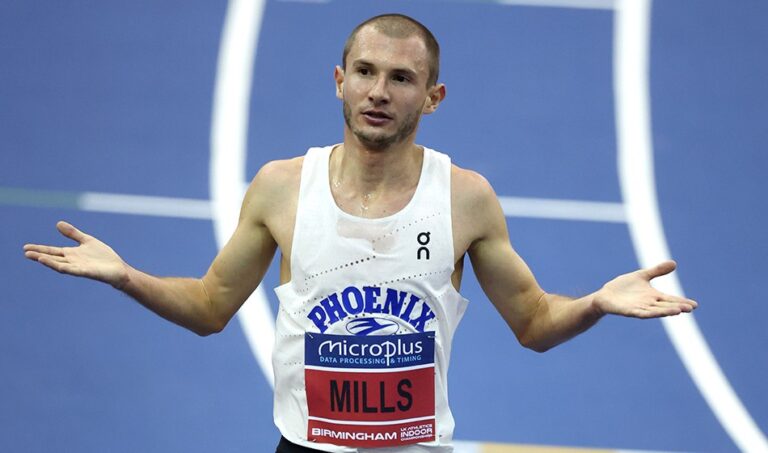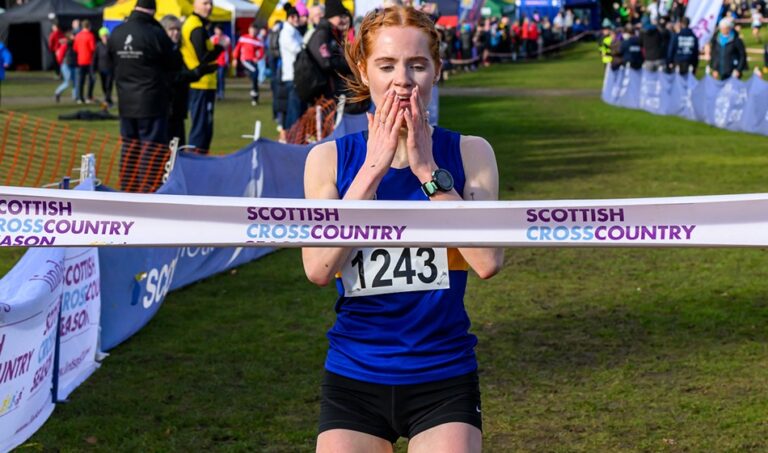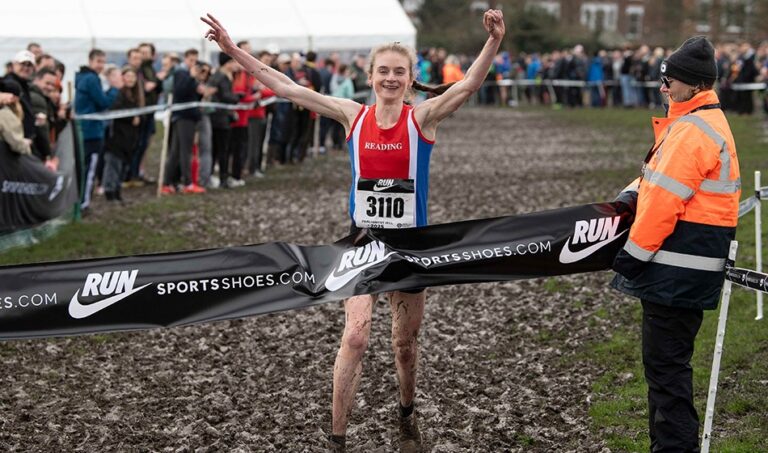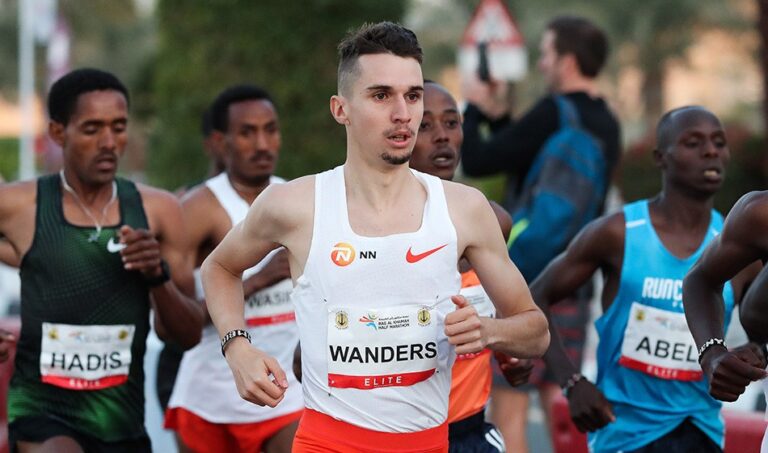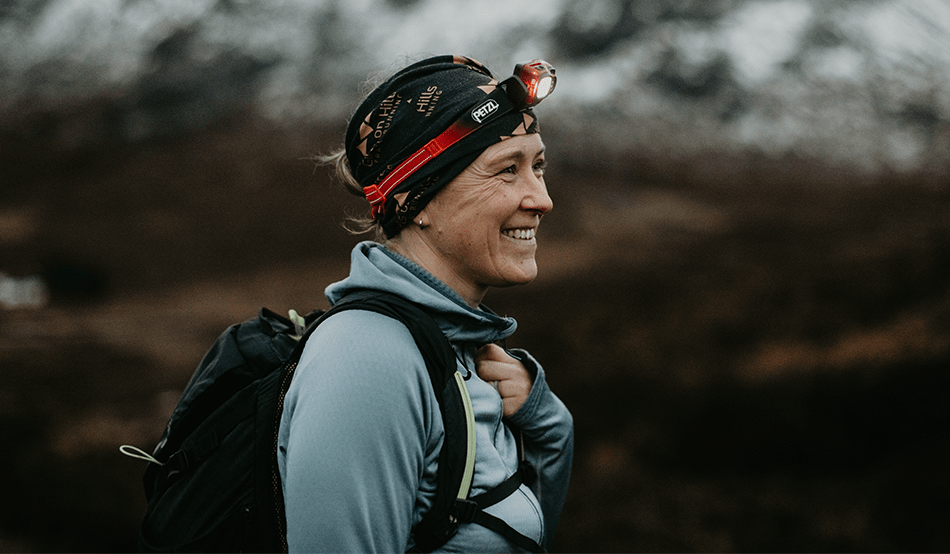
The co-founder of the female-only company discusses how her group promotes safety and independence for female mountain runners
As the dark winter nights continue, the thought of lacing up your running shoes and heading out into the chill can feel daunting – especially for women.
The challenge of staying safe while running is something that many women face, and it can be even more pronounced in remote areas, like the terrains of mountains, where the isolation can feel even more intense.
That sense of unease, especially as dusk falls, is one of the reasons why ultra-runner Keri Wallace, alongside friend Nancy Kennedy, decided to take matters into their own hands in 2018, founding a trails and mountain running group exclusively for women in the Scottish Highlands – Girls on Hills.
Based in Glencoe, the female-only group focuses on the trail, fell, and sky running. The pair also quickly realized there was a broader need for not just running, but also running hill-walking, navigation, and mountain safety events.
Fast forward to today and their venture has blossomed into an inclusive and empowering community, boasting over 21,000 followers on Instagram. The group now extends its reach beyond the Highlands, hosting courses across the UK’s other national parks, including Snowdonia and the Lake District.
The mission of Girls on Hills is clear: to equip women with the confidence and skills needed to navigate the mountains independently and safely. The sense of safety is something that Wallace, an elite ultra-runner and mountain leader, personally understands.
Her latest achievement involved running the entire length of the West Highland Way – Scotland’s oldest national trail, measuring 154km and involving a climb of 4312m. She completed the run without a single stop and with the essential gear provided by Petzl, including head torches for the dark days and nights.
What does Girls on Hills involve?
We take women out on guided runs but also guided hill walking. We teach navigation skills and winter skills so that women can continue to get out in the winter environment and don’t have to feel like they’ve got to stop as soon as it starts to snow.
We also run retreats where we go out and get really muddy, have a run, and then cook our own dinner. It’s about getting women together for adventurous weekends and creating a social space for outdoor activities in an environment where it’s really supportive. There’s less of a pushing of pace and it’s not a competitive environment.
I think lots of people don’t necessarily like the idea of having a single, gender group and think that it’s creating more division than inclusivity. But actually, it can provide a really good stepping stone for people who don’t necessarily feel confident in a mixed group.

Keri Wallace (B Chalmers)
Why did you decide to start the Girls on Hills group?
Nancy Kennedy and I both founded it as we knew each other through running and both lived in Glencoe. I had just recently had children and left my day job and we got into a conversation about the comments from women we both get, which is usually them telling us they wish they could do what we do.
We started to think there’s quite a big gap between what people think we’re doing and what we are actually doing. There was a sense that women felt they couldn’t do it so we thought it would be good to set something up where we could take more women out running in the hills, in the trails, and try and build a bit of that confidence up. It was very much a small side hustle and we didn’t have a great plan for it to become a business in its own right.
We only had a few guided runs in the first year but it just grew and grew and within a couple of years it became our main job. It was always about getting more women out in the hills and empowering them with the skills and confidence to become more independent in that environment.
Why is it important to encourage women to take part?
We do see that there is a participation gap in trail running and it’s less than it used to be. The gap is almost non-existent in trail running, it’s decreasing all the time, which is fantastic. When you get to more technical trail running, mountain running, sky running, and ultra running, you still see that gap quite significantly.
You might look at an ultra-distance race and see only 12% of the field is female. I think it’s so multi-layered and some of it comes from a cultural throwback to when it was the norm that women didn’t do these things. If you go back to climbing, mountaineering, racing, and even running marathons, women weren’t allowed to compete. So, there was a sense that women shouldn’t do these things and we weren’t really capable – it was a man’s thing.
It’s not completely gone, there are still elements of that. Girls are still brought up a lot of the time thinking that they’re not as physically capable as boys or that sport isn’t for girls as much as it is for boys – it’s a grassroots problem.
I took this up as a hobby in my 20s because it wasn’t a thing when I was a kid at school. But the opportunities are now increasing and we’re, starting to see that change in the media now. We’ve got fantastic female role models and we’re starting to see women can really do these longer distances and we’ve got attributes that make us really good at long-distance running. There’s lots of fantastic progress, but we’re not completely there yet.

Petzl
How did you get into mountain running?
I’ve always been really sporty, but at school, it was traditional school sports and team sports. I grew up in the West Country in Cornwall and I moved to Scotland with my now husband in 2008. I’d just not long gotten into trail running and rock climbing before I moved up to Scotland. I was a latecomer to the game in some ways, but I went straight into mountain running and combined my rock climbing with my trail running passion. Moving to Glencoe, I had this amazing playground.
I’d been doing that for a decade or so before I started Girls on Hills. So it was very much a passion project.
What is your biggest achievement?
A couple of years ago I ran the UK Sky Running Series and I came third female in that which was a real achievement for me. I felt like that was really cool to have gotten a full series completed and to be on the podium. I did the Winter Tranter Round and set a new FKT for that a few years ago which is very much like a winter fell running round.
I also tried some alpine racing in 2023, I ran the Ultra Tour Monte Rosa, which was my first 100-mile mountain race, and came fifth female in that, which was awesome. Recently, I did the West Highland Way and I’ve been moving towards doing more solo unsupported things partly because it fits quite well with the ethos of Girls on Hills to show that women can get out and do things without having to feel like they need external support.
Do you have any role models and who are they?
I work with Nicky Spinks a lot of the time and she’s a massive role model for me particularly because she’s still out there in the 55 plus category, smashing records and setting new times and winning races. It’s a massive inspiration to me to see that I don’t need to give up running anytime soon.
I think it goes without saying but Jasmin Paris is a phenomenal role model for us. We had her come along to our ultra running trail skills weekend in November and she was phenomenal because she was just so relatable. She’s always really modest but she’s a brilliant role model for women.

Petzl
What is it like to work with the brand Peztl?
Girls on Hills works with them in terms of a brand partnership and we’ve always used their head torches. They provide us with a pool of head torches, which enables us to give everybody who comes on a winter course a really good head torch to use because obviously, we have a lot of darkness.
In my running challenges, I’ve used their kit. When I did the West Highland Way in winter recently, it was 17 hours of darkness, which is a pretty long time so I needed more than one head torch for that. I was really well placed with all the head torches and batteries they had provided me.
The torch that I was using was the Swift RL Headlamp which is super ridiculously bright so you almost feel like you’re running in daylight at times.
Why is it so important for women to use Petzl equipment when running?
I’m quite afraid of the dark and lots of women are. You’re running along thinking of all the worst things that could happen and having a bright head torch, knowing that it’s reliable, is a big part of it for helping me feel more confident.
There is a real personal safety issue for women running at night. In rural areas, the trails are very quiet but the statistics show there’s not the same kind of level of risk as in urban areas, yet we still see people being nervous to run in the dark and run in the winter months. I think having really good equipment and being able to trust that equipment helps build a bit of confidence in going out and still feeling like you can run in the winter.



